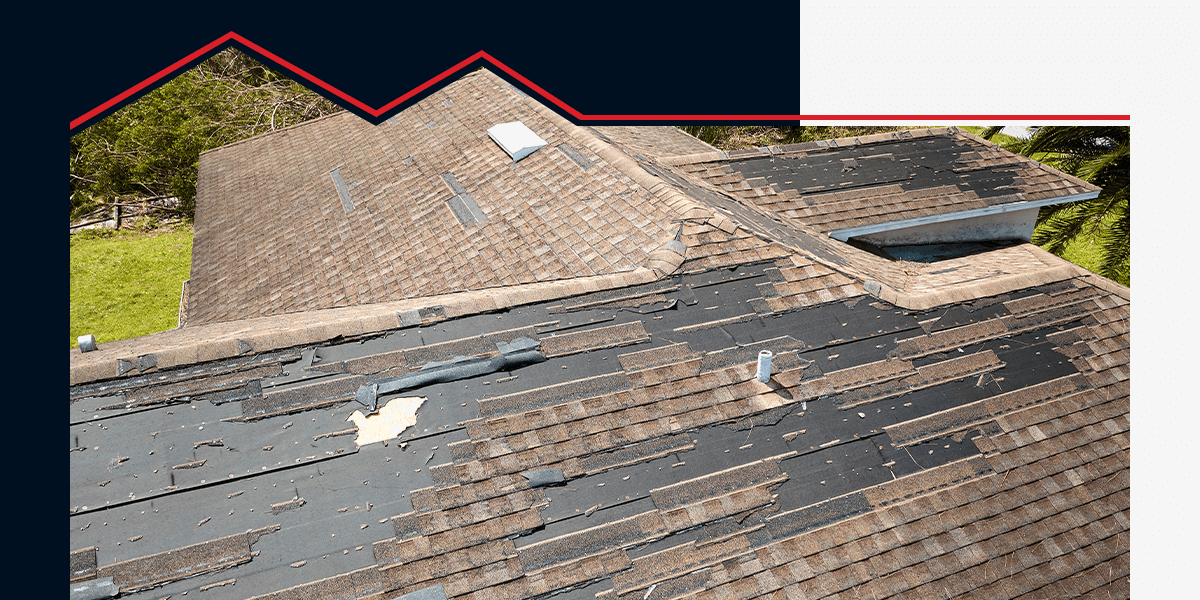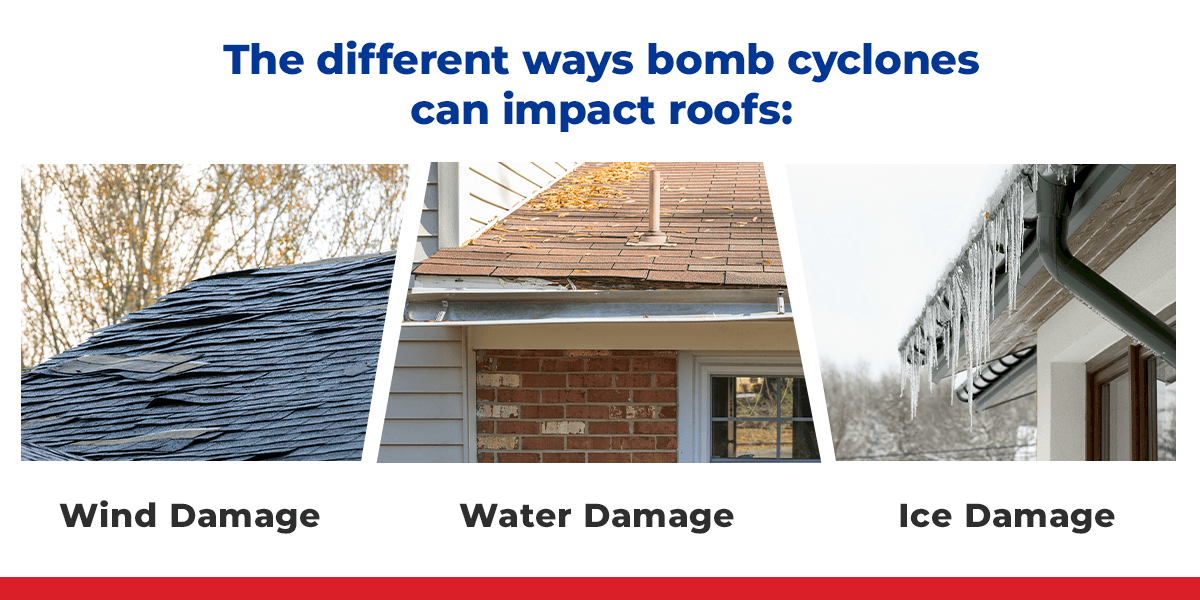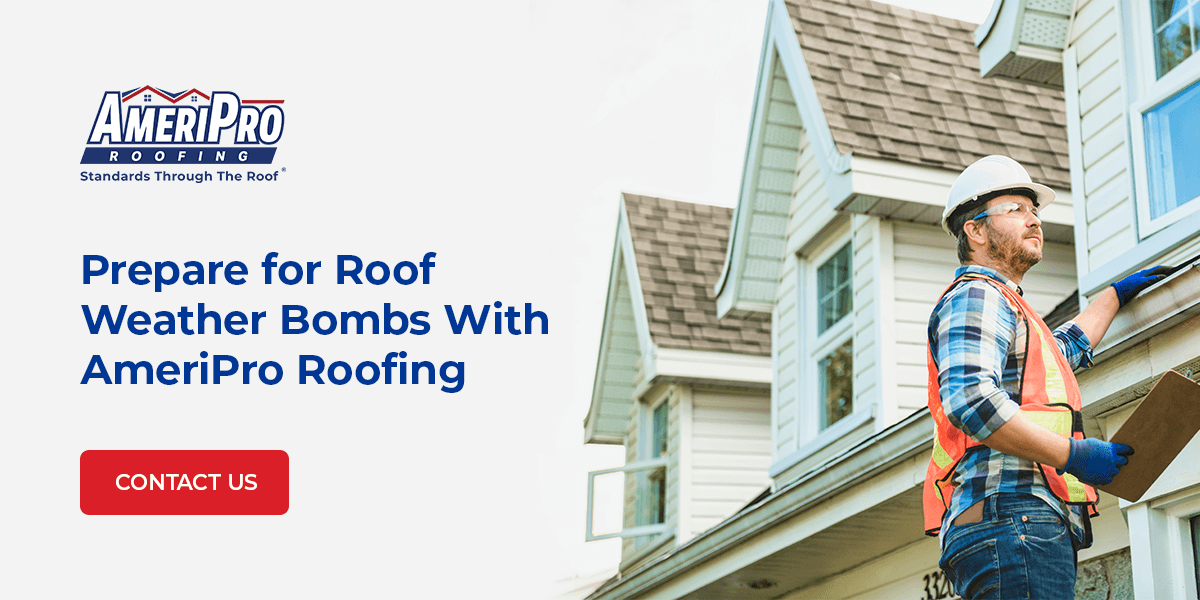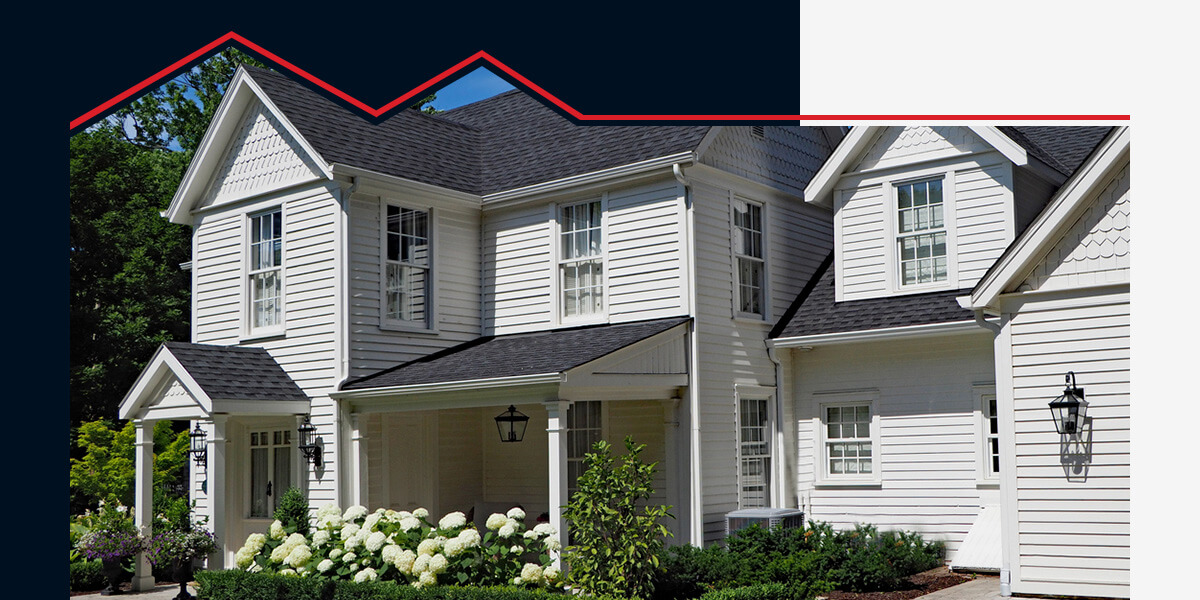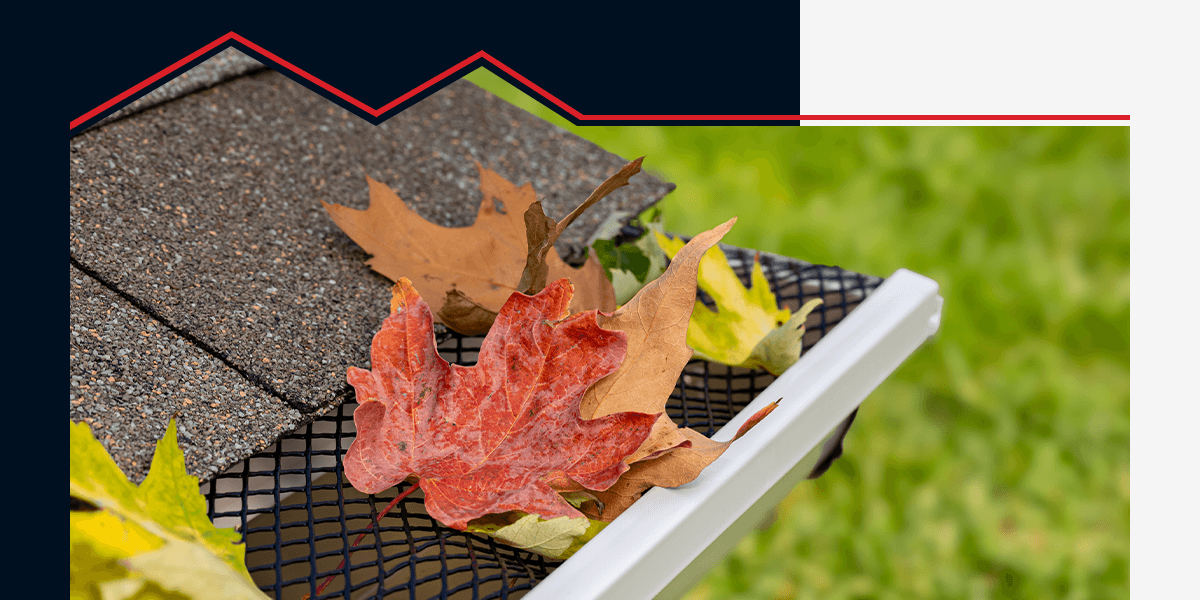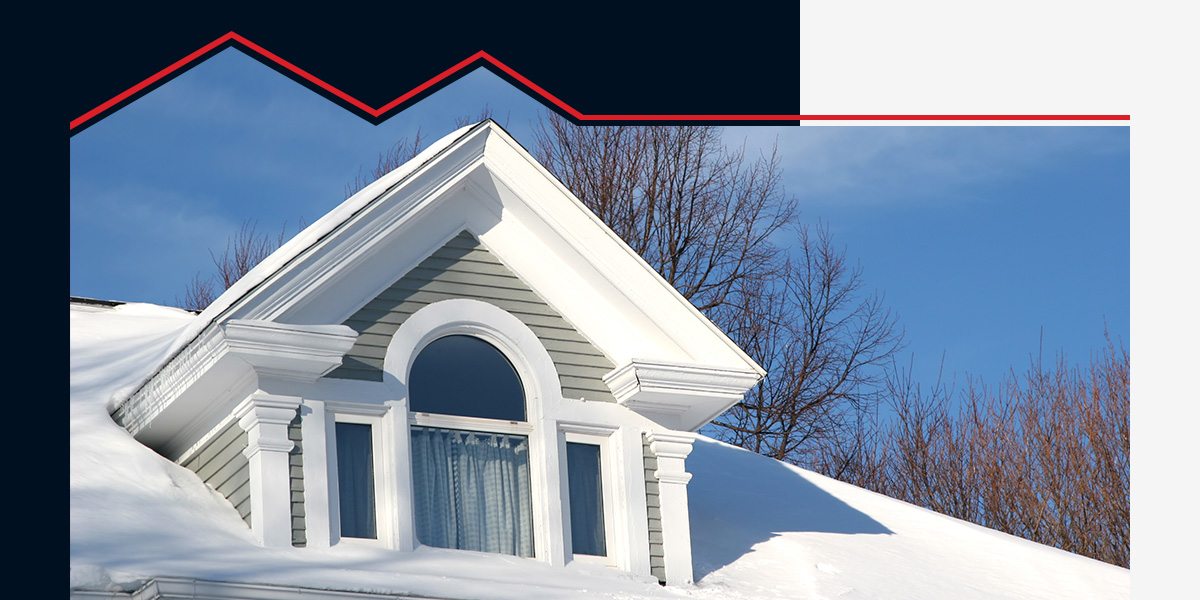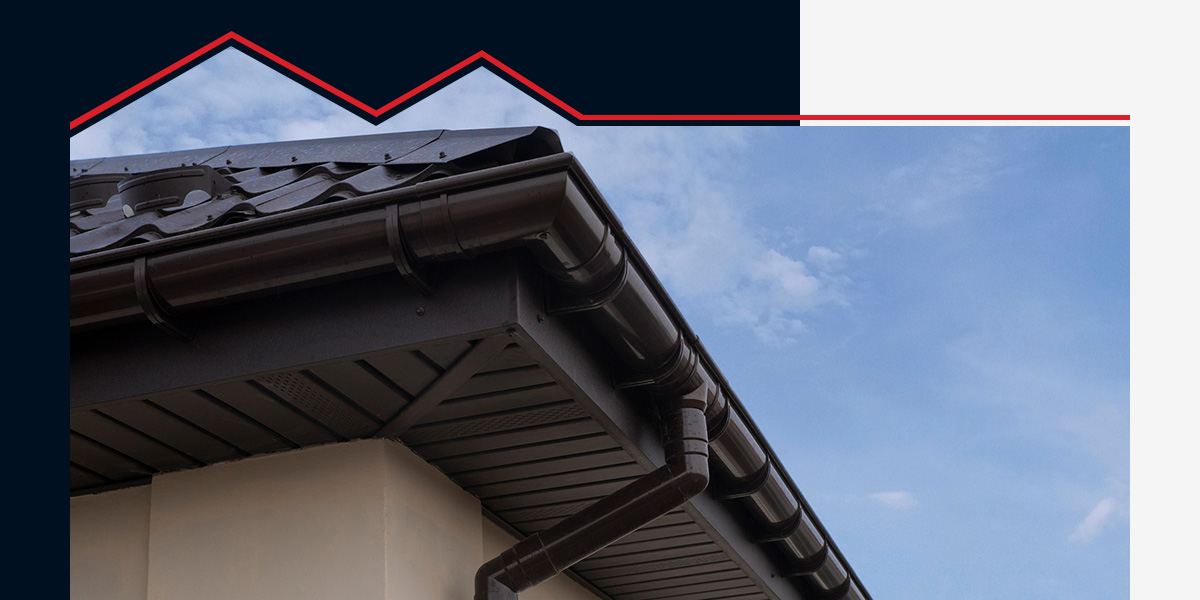As a homeowner or business owner, protecting your structure from storm-related damage is likely high on your priority list, especially if your local area is prone to inclement weather. Storms like bomb cyclones can bring on forceful winds and precipitation, posing threats to your roof tiles or shingles.
Thorough preparation is key to defending your property against bomb cyclones and their potentially damaging aftermath. Additionally, you’ll want to take the appropriate post-storm precautions to assess your roof and property for damage. In this guide, you’ll learn how bomb cyclones can affect roofing. We’ll also cover some steps you can take to protect your home or business.
Roof Damage From a Bomb Cyclone
Also known as “weather bombs,” bomb cyclones are winter storms that mimic hurricanes. They are created by a special weather pattern called bombogenesis. Most bomb cyclones are accompanied by high winds and intensify rapidly. These meteorological events can wreak havoc on houses and larger structures, particularly on roofs.
Wind, snow, rain, hail and ice damage are common results from bomb cyclones. Heavy winds can literally tear roofs apart. Pools of water on a rooftop after intense rains or partially melted snow place immense stress on structural supports. If combined with freezing temperatures and clogged gutters, it’s the perfect storm for ice dams to form, rendering your gutter systems useless.
Bomb cyclones can happen anywhere but are more common in the Midwest and the South. When large bodies of warm and cold air meet and the atmospheric pressure drops quickly, the result can be a swirling weather phenomenon that closely resembles a hurricane and has vast potential to destroy large and small buildings. The results can mean everything a Category One hurricane dishes out, like massive storms, torrential rains, widespread flooding and destructive snow storms.
What Does This Mean for Your Roof?
It’s important to familiarize yourself with bomb cyclones and listen carefully to all weather bulletins. Sometimes, the alert window is as short as one or two hours. Be ready to act quickly, take cover and protect your family and your property.
The winds associated with these storms can reach 60-80 miles per hour and sometimes higher. Bomb cyclones often uproot fences, utility poles, trees and similar structures. Flying debris, blizzard conditions, poor visibility and structural damage are other signs of these highly dangerous weather patterns.
Winter storms and flooding are two common reasons homeowners file insurance claims, meaning bomb cyclones carry the potential for massive economic damage to communities. Fallen limbs, hail, violent rain storms, snow and ice are all part of the package. Homeowners should make sure their roofs are in good shape before this natural menace strikes.
Here are the different ways bomb cyclones can impact roofs:
1. Wind Damage
Roof wind damage from a bomb cyclone can take many forms, including broken, missing or displaced shingles. Other serious problems include direct hits from fallen trees, limbs or utility lines. Gutters, too, are no match for the violent force of bomb cyclone winds, which can completely rip them off buildings.
2. Water Damage
Heavy rains are a roof’s natural enemy. Even the smallest structural problems, like missing shingles, can allow water to seep into places where it shouldn’t. This can lead to staining, wood rot, mold and a host of other problems, possibly requiring emergency repair to get you watertight.
Bomb cyclones are especially destructive because they bring huge volumes of water in a short period. Pooling is a common problem when a roof isn’t ready for torrential storms. Water is heavy, and even small pools on a roof can spell trouble.
3. Ice Damage
When the warmer parts of a roof melt large sections of snow, water dribbles down the roof and forms icicles and ice dams. Besides impairing the roof’s drainage system, ice dams and icicles can do major damage on their own. They cause water to seep into walls, forcing shingles to rise up and detach from the expanding layer of ice underneath.
How to Prepare for a Bomb Cyclone
There’s no need to wait for a storm warning. Decide right now to make your home or business as safe as possible, no matter what kind of weather is in the forecast. If your local weather service reports that dangerous weather is on the way, particularly bomb cyclones, think about doing the following:
1. Create a Disaster Preparedness Kit
Stock up on the essentials in case a power outage occurs. A disaster kit should include items like:
- Bottled water
- Nonperishable foods
- Any necessary medications
- Flashlights and batteries
- A first-aid kit
- Fully charged electronics
- Warm clothes and blankets
2. Warn Others
Besides your own family, you may want to give others a heads-up about the storm. As a courtesy, consider checking in on your neighbors to ensure everyone is prepared for the bomb cyclone.
3. Seal Any Cracks in Your Attic
Sealing openings in your attic can minimize cold spots and drafts. This helps regulate temperature and improve comfort throughout your home.
4. Pick up Loose Debris
During severe storms, dead tree limbs and other debris can fly up, puncture windows and damage building exteriors. Loose debris can pose hazards to both your home and its occupants.
Take a quick walk around your property and pick up any loose materials. Confirm no debris is blocking storm drains, as water buildup can flood your yard and home. Make sure gutters are clear of debris and blockage, too.
5. Put Cars in the Garage
Frigid temperatures can drain car batteries. Sheltering your vehicles can protect them from harsh winds, ice and snow. If possible, try to avoid subjecting your cars to the elements — that way, you can prevent them from becoming too cold or facing bomb cyclone damage.
6. Remove Excess Snow From the Roof
Rain and precipitation from storms can put additional pressure on the snow and, subsequently, your roof. Enough force can cause the roof to sink or even collapse. That’s why it’s a good idea to clear as much snow from the roof as possible before the storm.
7. Plan Financially
It’s important for homeowners and business owners to evaluate their insurance coverage periodically. Determine if your policy covers roof damage caused by hail, wind, snow or rain.
In some cases, you may require an additional rider or endorsement to ensure full protection against these conditions. By reviewing your insurance policy carefully and adjusting as needed, you can protect your home or business from financial strain.
8. Schedule a Roof Inspection
You won’t always have time to do everything on the list. However, if you reside in an area where bomb cyclones or other destructive weather is a seasonal occurrence, be sure to get regular inspections from a reputable home improvement and roofing company like AmeriPro Roofing.
Our team has the experience to prepare for every conceivable type of weather. We’ve dealt with the following destructive climatic conditions for over two decades:
- Ice
- Snow
- Heavy winds
- Tornadoes
- Hurricanes
- Ice storms
- Heavy rains
- Flooding
It pays to be prepared, and it’s smart planning to have your home inspected before the dangerous weather arrives. Why wait until the weather service says, “Take cover?” Plan today to put your roof and the rest of your house in top shape. Have an inspection done by AmeriPro Roofing’s roofing experts and know you’ll be ready for anything.
What to Do After the Storm
Homeowners should know:
- How high winds, excessive rain and snow can damage a roof.
- How to do a basic inspection after the storm passes.
- Where to get professional help for storm damage repairs.
Even if there isn’t visible damage to your roof or property, it’s still wise to consult a professional for post-storm inspection and analysis. They may detect indicators of damage not immediately recognizable to the naked eye.
We recommend the following measures following the bomb cyclone:
- Survey your property. It’s a good idea to do a general property survey after a storm has moved on. Walk the perimeter of the structure and note any obvious damage. Take good photographs and remember to write down the things that photos don’t show.
- Contact a specialist. Call a professional roofing company like AmeriPro Roofing as soon as possible for a complimentary inspection and detailed damage inspection report for insurance purposes. Claims can’t be officially filed until a licensed, bonded and insured roofing company like AmeriPro Roofing has carried out an inspection.
Prepare for Roof Weather Bombs With AmeriPro Roofing
Our experts at AmeriPro Roofing can help you navigate each stage of the bomb cyclone, from initial preparation steps to post-storm assessments. Our comprehensive residential and commercial roofing services include:
- Conducting complimentary roof inspections to identify risk areas.
- Assessing roof damage after the storm.
- Replacing missing shingles and guttering.
- Clearing debris from gutters and installing water-repellant membranes if necessary.
- Repairing leaks and performing other preventive maintenance as necessary.
- Assisting you through the insurance process so you pay as little in out-of-pocket fees as possible.
For immediate needs, call the 24/7 AmeriPro Roofing Emergency Service line. As soon as it’s safe to do so, our emergency response team will take immediate steps to reduce further damage to your property.
Should your roof require any upgrades or repairs, you can rest assured it will receive the highest-quality materials and services possible. Give your roof the superior care it deserves by partnering with AmeriPro Roofing for inspections and repairs.
Ready to connect with one of our roofing specialists? Contact us or schedule your complimentary inspection today!



